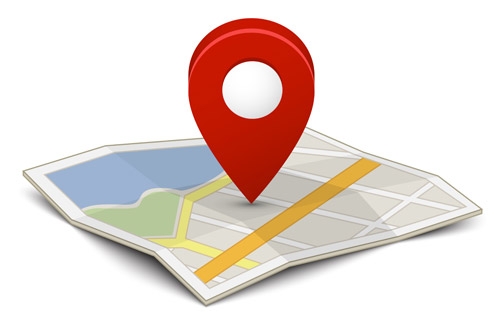
Social networking has become an integral component of businesses today. Smartphone’s and social networks are important for allowing users to interact, share, meet up, and recommend places, allowing for more traffic and profits for business owners! Location based marketing allows for users to give live updates of their location, with the help of mobile phone tracking, global positioning satellites and other real time locating system technologies. Most commonly, people use lo-so apps to check in whenever they go places, allowing for users to publish what venue they are at. Lo-so networks such as Foursquare, Loopt, Google Places, Facebook Places and Gowalla are helpful in enabling a business not only with a physical location to interact with customers online, but also for them to visit the store in person!
Types of location based marketing
Google Places is a type of location based marketing that is simple for organizations who want to get their information out to the consumers when they are searching for your business. Listings for Google Places show up when you search on Google, and the application also allows for tags where users or businesses are able to attach photos, videos, and much more. Foursquare is popular among fans of MTV and Gossip Girl (viewers check-in when they’re watching), where companies are able to provide relevant tips on places and events that are occurring within a certain location. Gowalla focuses more on travel, with a key partnership with Disney theme parks. Scvngr provides challenges for players to accomplish when they arrive at a certain location, for example checking in, taking a photo, adding a comment, and so on. This form of customer engagement truly enhances the users experience at the organization. Facebook places allows for users to share where they are, connect with friends nearby, and find local deals. Check out the following video to learn more about Facebook Places.
Advantages of location based marketing
Location based marketing is the future. It allows for companies to differentiate their business from local competitors, and to capture their target audience. Location based marketing also encourages impulse buying, for example when organizations say “Receive 50% off if you come into our store in the next hour!” Businesses are able to announce any promotions through these applications; so that when users “check in” they are notified of any deals that may be available! Location based marketing allows for a stronger one-on-one relationship, where there is a better connection and a customer-employer relationship is formulated. Location based marketing also builds brand recognition and loyalty among your consumers.
Will location based marketing fulfill your goals?
Location based marketing takes into consideration the goals of your organization, whether you are trying to increase foot traffic into your store, if you want to sell more of a certain item or product, if you want more people during a specific hour of the day, if you are looking for new customers, or repeat customers. Considering these questions allows for you to decide whether or not location based marketing would enhance your business and fulfill your goals.
Should you use location based marketing?
The key step when first approaching location based marketing is ensuring your location is accurately listed in order for users to find your stores and products! Since discovery is such a key component of the location based marketing process, it is important to establish name recognition. Location based marketing allows for brand recognition and encourages customers to “check in” to your location! Using location based marketing allows for an increase in customer engagement and brand loyalty. Many organizations also offer promotions to users who “check in” to their location. Location based marketing allows for an increase in customer engagement, where a better relationship is able to be created between businesses and customers.
Is your business currently using location based marketing techniques to draw customers in? Let us what sort of effect it’s had on your business in the comment section below.
